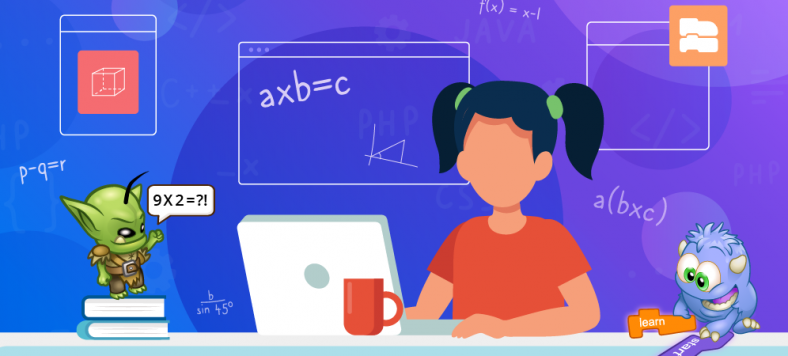Your basket is currently empty!

It All Adds Up—Coding Helps Kids In Math!
How coding improves math performance
In the past, it was generally believed that kids who are good at math should learn to code. However, it turns out the reverse may also be true: coding can help kids do better in math by making math more engaging.
How is math used in coding?
The different ways of breaking down and analyzing problems in coding are particularly helpful when it comes to math.
For example, when kids program a game on Tynker where they need to keep score and health—they’re using variables and arithmetic.
When they’re making shapes with our pen drawing—they’re using geometry while working with angles and numbers.
When they’re building the logic of a program they’re using expressions and testing inequalities.
When they’re animating and moving things on the screen, they’re using coordinate geometry.
What do teachers and parents think about coding with Tynker?
Michelle Lagos, a computer science teacher at the American school in Tegucigalpa, Honduras, said, “One of the most common cross-curricular benefits of computer programming is that the kids have an easier time learning math skills.” She used Tynker in elementary classes and noted, “When they have to work on long division, it’s easier for them to visualize the numbers now instead of counting with their fingers. They visualize the equation and think of the best way to solve it.” Lagos added that as a result of using Tynker, “kids in many grades improved their math skills.”
The Casita Center, a magnet elementary school in California, saw considerable improvements in their student math scores, outperforming almost all other state schools with similar demographics. Jenny Anderson, the school’s STEM specialist, believed this improvement was due to practicing algorithmic and computational thinking when coding with Tynker. Plus, she said students were having fun at the same time, which meant they were more likely to stay engaged with the material.
Jesse Thorstad, the Technology Coordinator for the Fergus Falls Public Schools district in Minnesota, had a similar experience. “Tynker provides kids with a concrete example of the power of decimal places,” he said. “When studying decimals in math, the students experience a heartwarming ‘Ah-ha!’ moment when they see how moving a decimal block of code can affect the objects on the screen tenfold.”
Parents have also noticed improvements in their kids’ math abilities. Thomas, father of 11-year-old Benji, said that coding with Tynker had a significant effect on his son, even though Benji felt like he was just making and playing games: “One of the things [Benji] was having a problem with was math, so having to do the math involved in making a game and adding a score, multiplying for points, and different things like that, I think it helped him a lot.”
Source from https://www.tynker.com/blog/articles/ideas-and-tips/it-all-adds-up-coding-helps-kids-in-math%EF%BB%BF/